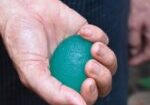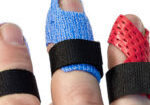Sensory interventions on motor function, activities of daily living, and spasticity of the upper limb in people with stroke: A randomized clinical trial.
Filed under Treatments, Uncategorized
Maryam, D., Parvin, R., Hossein, B., Jalili, M. & Hosein, T. (2020). Sensory interventions on motor function, activities of daily living, and spasticity of the upper limb in people with stroke: A randomised clinical trial. Journal of Hand Therapy, Jun 18;S0894-1130(20)30076-4. doi: 10.1016/j.jht.2020.03.028. Online ahead of print.
The Skinny:
- Stroke is the second cause of death, leading to sensory impairments and motor problems.
- The purpose of this study was to determine if proprioceptive and exteroceptive stimulation would improve outcomes for spasticity and activities of daily living (sensory stimulation activities for stroke patients) compared to traditional therapy in chronic stroke patients (hand therapy for stroke patients).
- Participants were randomly assigned to two groups
Intervention (Group 1):
- Exteroceptive exercises Included: Facilitatory or inhibitory techniques, fast brushing, stretch pressure, icing,
- Proprioceptive Stimulation: Weight-bearing, heavy joint compression, and stretch pressure
- Traditional therapy
Control (Group 2) :
- Traditional therapy
In the Weeds:
- A single-blinded clinical trial comparing the effect of exteroceptive and proprioceptive stimulations in people who have suffered from a stroke. Sixty patients who were are least 6 months post-stroke were divided into two groups intervention (group one) and control (group 2).
- Patients attend therapy 4 days per week for 45-minute sessions for 6 weeks.
- Outcome measures included the Modified Ashworth Scale, Fugl-Meyer assessment of Motor Recovery after Stroke, and Barthel Index. These were completed pre and post-study.
Bringing It Home:
- Patients in the intervention group showed improvements in motor function, activities of daily living, and improvement in spasticity compared to the control group. Adding proprioception and exteroceptive stimulation can improve motor function and ADLs even in chronic stroke patients. These can be added to your traditional therapy regimes.
Rating:
- 4/5
- Limitations: The article did not give a definition of traditional therapy. The sample size is fairly small in number. Long-term follow-up is unknown which would be helpful in determining if the interventions improved long terns outcomes.
More To Read
Risk Factors for Complex Regional Pain Syndrome (CRPS) in Patients with Hand Trauma
Hand Trauma and CRPS in patients attending Hand Therapy By Tristany Hightower Savaş, S., İnal, E. E., Yavuz, D. D., Uslusoy, F., Altuntaş, S. H., & Aydın, M. A. (2018). Risk factors for complex regional pain syndrome in patients with surgically treated traumatic injuries attending hand therapy. Journal of Hand Therapy, 31(2), 250–254. https://doi.org/10.1016/j.jht.2017.03.007 The…
Read MoreNeurolutions IpsiHand to Aide in Stroke Rehabilitation in Patients with Hemiparesis
Neurolutions IpsiHand to Aide in Stroke Rehabilitation in Patients with Hemiparesis Hemiparesis occurs in approximately 77% of new stroke cases and often persists into thechronic stage (Humphries et al., 2021). Recent innovation, such as brain-computer interfaces(BCIs), offer new opportunities for motor recovery even years after stroke. One such approach is the Neurolutions IpsiHand System, an…
Read More5+ Common Mallet Finger Splints
Finger orthoses can be tough, and the mallet orthosis is no exception in hand therapy. The protocol for 15 degrees of DIP extension with mallet fingers is tricky to manage while making a common mallet finger splint. Small splints on little fingers are also tricky to get sized just right and with strapping in the…
Read MoreSimple but Effective Ways Hand Therapists Address Psychosocial Impacts of Upper Extremity Injuries
Although psychosocial factors are often not formally assessed during an evaluation in those with upper extremity injuries, the therapist often informally assesses these during and after treatment sessions. Sustaining an upper extremity injury can be a physically and emotionally challenging experience. Beyond the physical pain and limitations, these injuries can profoundly impact an individual’s psychosocial…
Read MoreSign-up to Get Updates Straight to Your Inbox!
Sign up with us and we will send you regular blog posts on everything hand therapy, notices every time we upload new videos and tutorials, along with handout, protocols, and other useful information.






